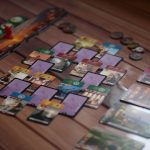Download links
How to install Mastering the Art of Parkour with taya777 APK?
1. Tap the downloaded Mastering the Art of Parkour with taya777 APK file.
2. Touch install.
3. Follow the steps on the screen.
Description
Parkour, often described as the art of movement, is a discipline that emphasizes fluidity, efficiency, and creativity in navigating obstacles. Originating in France in the late 20th century, it has evolved from a training method for military obstacle courses into a global phenomenon that attracts practitioners from all walks of life. At its core, parkour is about moving from point A to point B in the most efficient way possible, utilizing one’s body to overcome physical barriers such as walls, railings, and gaps.
This practice is not merely about speed; it also incorporates elements of style and personal expression, allowing individuals to interpret their environment uniquely. The philosophy behind parkour extends beyond physical movement; it encompasses a mindset that encourages resilience, adaptability, and problem-solving. Practitioners, known as traceurs (male) or traceuses (female), often find themselves in urban environments where they can creatively engage with their surroundings.
The discipline promotes a deep connection with one’s body and environment, fostering a sense of freedom and empowerment. As individuals learn to navigate their surroundings with confidence, they also cultivate a greater awareness of their physical capabilities and limitations, which can lead to personal growth both inside and outside the practice.
Key Takeaways
- Parkour is a physical discipline that involves moving through urban environments using only the human body and the surroundings to propel oneself.
- Strength and agility are crucial for parkour, and can be developed through bodyweight exercises, plyometrics, and functional training.
- Fundamental parkour techniques include precision jumps, vaults, wall runs, and basic acrobatics.
- Overcoming mental barriers in parkour involves building confidence, managing fear, and developing a mindset of adaptability and problem-solving.
- Safety and injury prevention in parkour are essential, and can be achieved through proper warm-up, technique practice, and knowing one’s limits.
Developing Strength and Agility for Parkour
Building Strength through Essential Exercises
Exercises like push-ups, pull-ups, squats, and core workouts form the foundation of a traceur’s training routine. These exercises not only build muscle but also improve endurance, which is crucial for longer sessions of practice.
Enhancing Agility and Coordination
Agility is equally important in parkour, as it allows practitioners to change direction quickly and maintain balance while navigating obstacles. Plyometric exercises, such as box jumps and burpees, can significantly enhance explosive power and coordination. Incorporating agility drills—like ladder drills or cone sprints—into training can improve foot speed and reaction time.
This heightened sense of body awareness is vital for executing complex maneuvers safely and effectively.
Learning Fundamental Parkour Techniques

Mastering fundamental parkour techniques is crucial for anyone looking to progress in the discipline. These foundational skills serve as building blocks for more advanced movements and are essential for safe practice. One of the first techniques to learn is the roll, which is used to dissipate impact when landing from jumps or falls.
Proper rolling technique involves tucking the shoulder and rolling diagonally across the back to distribute the force evenly, minimizing the risk of injury. Another essential technique is the vault, which allows practitioners to clear obstacles efficiently. There are various types of vaults, including the speed vault, lazy vault, and kong vault, each serving different purposes depending on the height and type of obstacle.
The speed vault is particularly useful for low barriers where quick movement is necessary, while the kong vault is ideal for higher obstacles that require more elevation. Practicing these techniques repetitively helps build muscle memory and confidence, enabling traceurs to execute them fluidly in real-world scenarios.
Overcoming Mental Barriers in Parkour
| Barriers | Challenges | Strategies |
|---|---|---|
| Fear of Heights | Difficulty in performing jumps and leaps | Gradual exposure and practice, visualization techniques |
| Lack of Confidence | Hesitation in attempting difficult moves | Positive self-talk, setting achievable goals |
| Physical Limitations | Struggling with strength and flexibility | Regular conditioning, flexibility training |
| Mental Blocks | Difficulty in overcoming past failures | Mindfulness, seeking support from peers |
While physical prowess is vital in parkour, mental fortitude plays an equally significant role in a practitioner’s journey. Many individuals encounter mental barriers that can hinder their progress, such as fear of falling or self-doubt regarding their abilities. Overcoming these psychological obstacles requires a combination of mindset shifts and practical strategies.
One effective approach is visualization; by mentally rehearsing movements before attempting them physically, practitioners can build confidence and reduce anxiety. Another strategy involves gradually exposing oneself to challenging situations in a controlled manner. This process, often referred to as progressive exposure, allows individuals to confront their fears step by step.
For instance, if a traceur feels apprehensive about jumping over a gap, they might start by practicing smaller jumps or using safety equipment like mats or pads to cushion falls. As they gain confidence with smaller challenges, they can incrementally increase the difficulty until they feel ready to tackle the original obstacle.
Safety and Injury Prevention in Parkour
Safety should always be a top priority for anyone practicing parkour. The inherent risks associated with jumping, climbing, and navigating urban environments necessitate a proactive approach to injury prevention. One of the most effective ways to minimize risk is through proper warm-up routines that prepare the body for physical exertion.
Dynamic stretching and mobility exercises can enhance flexibility and reduce the likelihood of strains or sprains. Additionally, understanding one’s limits is crucial in preventing injuries. Beginners should focus on mastering basic techniques before attempting more advanced moves or higher obstacles.
It’s also important to practice in safe environments where potential hazards are minimized; this could mean choosing locations with soft landing surfaces or avoiding areas with heavy pedestrian traffic. Wearing appropriate gear—such as supportive footwear—can also provide additional protection against injuries. Moreover, learning how to fall safely is an essential skill in parkour.
Practicing controlled falls and rolls can significantly reduce the risk of injury during unexpected tumbles. Traceurs should also be aware of their surroundings at all times; this includes recognizing potential hazards like uneven surfaces or slippery conditions that could lead to accidents.
Taking Your Parkour Skills to the Next Level

Once foundational skills are established and mental barriers are addressed, practitioners can begin to take their parkour skills to new heights. This progression often involves setting specific goals that challenge both physical abilities and creativity. For instance, aspiring traceurs might aim to master a particular trick or complete a challenging course that incorporates multiple techniques seamlessly.
Joining a community or finding a mentor can also facilitate growth in parkour practice. Engaging with other practitioners provides opportunities for collaboration, feedback, and inspiration. Many cities have parkour groups or classes where individuals can learn from experienced traceurs and participate in group training sessions that foster camaraderie and motivation.
Additionally, exploring different environments can enhance creativity in movement. Practitioners may seek out new locations—such as parks, urban landscapes, or even natural terrains—that offer unique challenges and opportunities for exploration. This not only keeps training fresh but also encourages adaptability as traceurs learn to navigate diverse obstacles.
As skills develop further, some practitioners may choose to participate in competitions or showcases that highlight their abilities. These events provide platforms for traceurs to demonstrate their creativity and technical prowess while connecting with others who share their passion for movement. Ultimately, taking parkour skills to the next level involves continuous learning, experimentation, and an unwavering commitment to personal growth within this dynamic discipline.
If you’re a fan of parkour, you may also be interested in checking out the article “Level Up Your Gaming Experience with Taya777 Online”. This article discusses how online gaming can enhance your overall gaming experience and offers tips on how to make the most of your time playing video games. It’s a great read for anyone looking to take their gaming skills to the next level.
FAQs
What is parkour?
Parkour is a physical discipline that involves moving through an environment in a creative and efficient way. It often includes running, jumping, climbing, and other movements to overcome obstacles.
Where did parkour originate?
Parkour originated in France in the 1980s, developed by David Belle and his group of friends. It was influenced by military obstacle course training and various martial arts.
What are the benefits of practicing parkour?
Practicing parkour can improve strength, agility, balance, and coordination. It also promotes problem-solving skills and mental focus.
Is parkour dangerous?
Like any physical activity, parkour can be dangerous if not practiced with proper technique and safety precautions. It is important to receive proper training and start with the basics before attempting more advanced movements.
Can anyone do parkour?
Parkour can be practiced by people of all ages and fitness levels, but it is important to start with proper training and progress at a pace that is comfortable for the individual.
Are there specific clothing or gear for parkour?
While there is no specific clothing or gear required for parkour, it is recommended to wear comfortable and flexible clothing that allows for freedom of movement. Some practitioners may choose to wear specialized parkour shoes for added grip and support.





